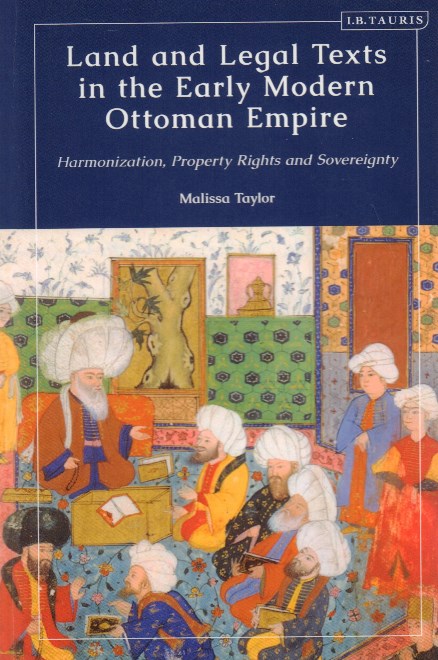Land and legal texts in the early modern Ottoman Empire : harmonization, property rights and sovereignty / Malissa Taylor.
Yer Numarası
A.IX/7775
ISBN
9780755647682 (HB)
9780755647699 (ePDF)
9780755647705 (eBook)
9780755647699 (ePDF)
9780755647705 (eBook)
Dil Kodu
İngilizce
Yazar
Basım Bildirimi
First published.
Yayın Bilgisi
London, UK ; New York, NY : I.B. Tauris, 2023.
Fiziksel Niteleme
x, 203 sayfa ; 24 cm.
Dizi
The Ottoman Empire and the world
Genel Not
İndeks s. [197]-203.
Bibliyografi, vb. Notu
Seçilmiş bibliyografya s. [181]-196.
Bibliyografik notlar s. [129]-179.
Bibliyografik notlar s. [129]-179.
İçindekiler Notu
Lifelong tasarruf, land tenure practices, and law over the longue durée -- Conquering a new terrain : Establishing the sultan's legislative authority -- Canonical voices : Discretion and analogy in the formation of the harmony tradition of land tenure -- 'The books of fiqh' : The Kanunname of Candia and the consolidation of a new doctrine in Hanafi academic texts -- The age of the mutasarrifs : Diffusion, rights and discretion in the eighteenth century -- From harmony to uniformity: Defensive sovereignty and the Ottoman nineteenth-century reforms.
Özet, vb.
“Using Arabic and Ottoman Turkish sources drawn from three genres of legal text, this book is the first full-length study in decades to investigate the evolution of Ottoman land law from its “classical“ articulation in the sixteenth century to its reformulation in the 1858 Land Code. The book demonstrates that well before the nineteenth century the tradition of Ottoman land tenure law had developed an indigenous form of property right that would remain intact in the Land Code. In addition, the rising consensus of the jurists that the sultan was the source of the land law paved the way for the wider legislative authority that the Ottoman state would increasingly assert in the Tanzimat period of reform. Demonstrating the profound and ongoing adaptation of a legal tradition that was at once both Ottoman and Islamic, it revises our understanding of the relationship between the modern Islamic world and its early modern past, and what kind of intervention was represented by reform in the nineteenth century“ -- Arka kapak.


